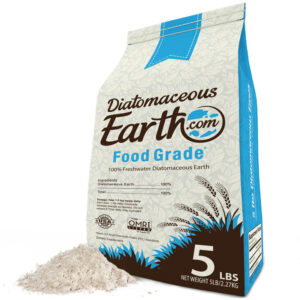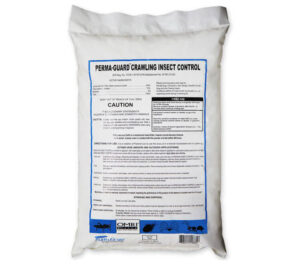When it comes to natural, non-toxic pest control, CimeXa and diatomaceous earth (DE) are two of the most commonly recommended products. Both are dust-like substances used to eliminate a wide range of insects—including bed bugs, ants, roaches, fleas, and more—without relying on traditional chemical pesticides.
But which one is better? In this guide, we’ll break down the key differences between CimeXa vs diatomaceous earth, so you can choose the best option for your home and pest situation.
What Is Diatomaceous Earth?
Diatomaceous earth is a naturally occurring substance made from the fossilized remains of microscopic aquatic organisms called diatoms. These fossil shells are rich in silica, and when ground into a fine powder, they become deadly to insects.
How it works:
Diatomaceous earth kills insects by physically damaging their exoskeletons. The sharp particles pierce the insect’s outer layer, causing them to dehydrate and die over time.
Types of DE:
-
Food-grade DE – Safe for pets and people, but slower acting
-
Pool-grade DE – Not safe for pest control; used in filtration systems
Only food-grade DE should be used for pest control purposes.
What Is CimeXa?
CimeXa is a synthetic insecticidal dust made from amorphous silica gel. Though it’s man-made, it’s still considered low-toxicity and safe for indoor use when applied correctly.
How it works:
CimeXa also kills by desiccating (drying out) insects. It clings to their bodies, absorbs the waxy outer layer, and rapidly dehydrates them—often faster than diatomaceous earth.
CimeXa is especially well-known for being effective against bed bugs, even those that have become resistant to traditional pesticides.
Key Differences Between CimeXa and Diatomaceous Earth
Let’s compare CimeXa vs diatomaceous earth across several critical factors:
| Feature | CimeXa | Diatomaceous Earth |
|---|---|---|
| Main ingredient | Amorphous silica gel | Fossilized diatoms (silica) |
| Speed of kill | Faster (typically 24–48 hrs) | Slower (3–7 days) |
| Longevity | Up to 10 years (dry areas) | Breaks down with humidity |
| Water resistance | Yes (resumes working when dry) | No (loses effectiveness) |
| Particle size | Finer, less visible dust | Slightly coarser and messier |
| Insect resistance | Effective against resistant pests | May not work on all pests |
| Application areas | Cracks, crevices, walls, carpets | Mostly dry floor surfaces |
| Cost | Slightly more expensive | Budget-friendly |
| Ease of application | Easier to spread thinly | Can clump, harder to dust evenly |
Which One Should You Use?
Use CimeXa if:
-
You’re targeting bed bugs, especially pesticide-resistant ones
-
You need something with longer residual power
-
You’re applying in tight spaces, wall voids, or carpets
-
You want a dust that’s more invisible and easy to apply
CimeXa is often the professional’s choice, especially in urban pest control settings.
Use Diatomaceous Earth if:
-
You want a completely natural, food-grade option
-
You’re dealing with ants, fleas, or roaches
-
You prefer a budget-friendly solution
-
You’re using it outdoors or in larger areas
Diatomaceous earth is great for DIYers who want a non-chemical, organic method for light to moderate infestations.
Safety: Is One Safer Than the Other?
Both products are considered low in toxicity, but they should never be inhaled intentionally.
-
Always wear a mask during application.
-
Keep both out of reach of pets and children until settled.
-
Don’t use large quantities in air vents or where you risk breathing in airborne dust.
CimeXa tends to cling better and create less airborne dust, making it slightly safer for indoor use when applied carefully.
Real-World Use Cases
Bed Bugs:
CimeXa wins here. It’s proven effective in both lab and field tests. It adheres better to bed bugs, stays active longer, and kills faster than DE.
Ants and Roaches:
Both products work well, but DE is often enough. If you’re dealing with a resistant species or long-term problem, CimeXa will offer longer protection.
Fleas:
CimeXa is again more effective, especially in carpets and pet bedding areas.
Outdoors:
Diatomaceous earth is better suited for gardens and outdoor areas since it’s more natural and environmentally friendly—just avoid applying it before rain.
Cost and Availability
-
Diatomaceous Earth: Widely available at garden stores, hardware stores, and online.
-
CimeXa: Usually found online or through professional pest control suppliers. Slightly more expensive, but a little goes a long way.
Final Verdict: CimeXa vs Diatomaceous Earth
| If you want… | Choose |
|---|---|
| Fast kill, strong residual control | CimeXa |
| Budget-friendly, all-natural option | Diatomaceous Earth |
| Best product for bed bugs | CimeXa |
| Long-lasting pest control in hidden areas | CimeXa |
| Safe, organic solution for outdoor use | Diatomaceous Earth |
Both CimeXa and diatomaceous earth are excellent tools in the fight against insects, and they each shine in different scenarios. If you’re tackling a serious or long-term infestation, go with CimeXa. If you’re looking for a natural, budget solution, especially outdoors, diatomaceous earth might be all you need.
Ready to get rid of pests the smart way? Choose the right dust, apply it carefully, and enjoy long-term relief—without the chemicals.


